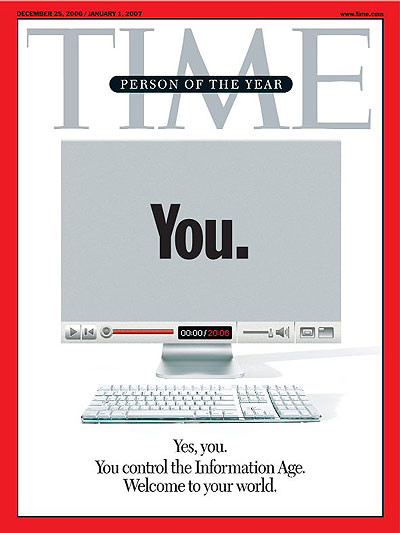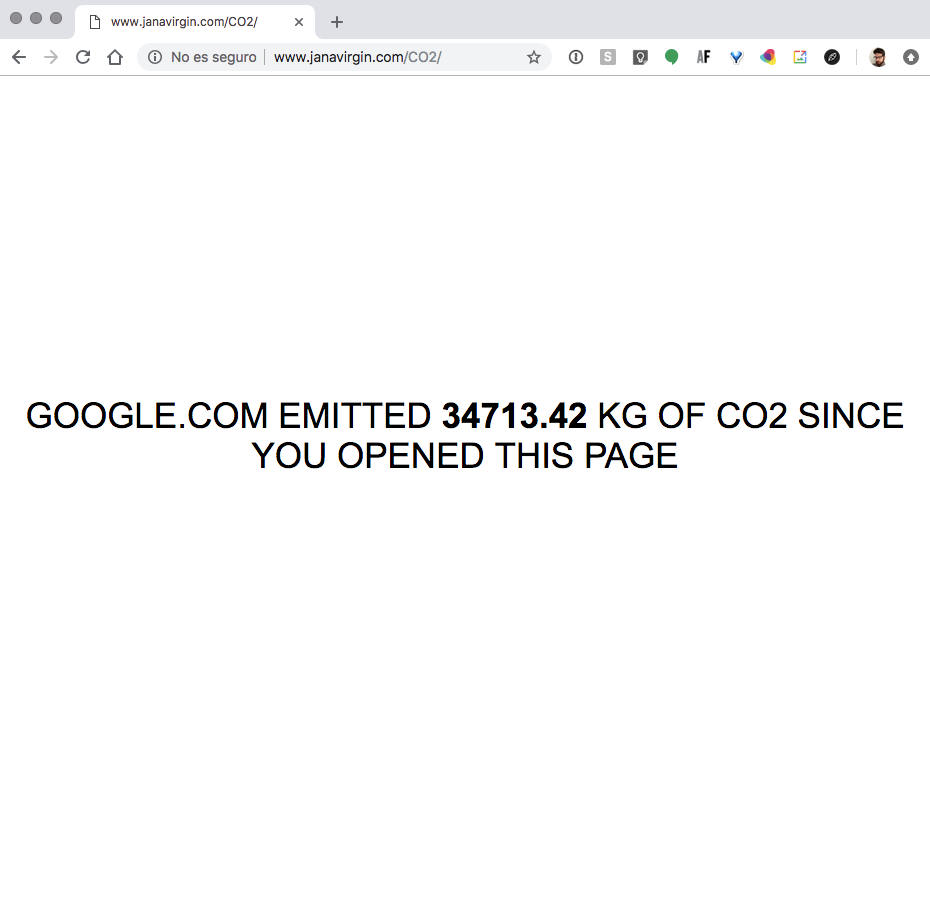
#30YearChallenge: the web, from bazaar to shopping mall
Pau Waelder
[Text written for the website and catalogue of the Art Futura festival, 2019]
The World Wide Web is 30 years old. In March 1989, Tim Berners-Lee wrote a proposal for the management of information about experiments being carried out at the European Particle Physics Laboratory in Geneva (commonly known as CERN). The document described a distributed hypertext system that would connect the fragments of information stored on CERN’s computers, so that “a single, global information space” could be created [1].
Berners-Lee even envisioned a three-dimensional model that would show the connections between researchers, making it easier to understand the very structure of the organization. Three decades later, the web is still basically a set of compositions of text, images, videos and sounds that slide through the browser window.
But the possibility of being part of that global information space has profoundly changed the lives of the users and industrialized societies that are part of the privileged portion of the planet with access to the Internet. In these thirty years, the web has also gone from being a bazaar to a shopping centre. If at first it seemed that it could become a free space, chaotic and alien to all order and hierarchy (as Eric S. Raymond described the development of Linux in his well-known essay The Cathedral and the Bazaar, 1997), it soon began to take shape as a controlled environment, with an established order and dominated by the interests of big business and governments.
The first artists to create works for the web in the 1990s saw the possibility of taking over this virgin space that seemed to escape the structures of the art world, but they already saw (with some irony) its future as “a shopping centre, a porn shop and a museum” [2]. In those years it was possible for an artist to insert her work among the results of a search for pornographic content on the web and lead users towards something they did not expect: this is what Natalie Bookchin did with her piece The Intruder (1999), a recreation of a brutal story by Jorge Luis Borges through several video games in which the user is led to carry out the harassment and murder of a woman.
Other artists explored what it meant to be part of the network, anticipating the concerns that, almost two decades later, occupy the debates on digital privacy. Eva and Franco Mattes gave full access to their personal computer in the work Life Sharing (2000-2003), through a web interface that allowed anyone to consult their archives and find out the geographical location of the artists in real time. Fake news also had an early materialization in the activist projects of Ubermorgen: [V]ote-auction (2000-2006), a website that (falsely) promised to buy votes in the U.S. presidential campaign, generated numerous news in the media and torrents of lawsuits, which required the immediate closure of the site. Ubermorgen as well as the Mattes and other artists have known how to play with the thin line that separates reality and fiction online (and nowadays in any media), a line that will soon be definitively blurred thanks to deepfakes, increasingly realistic manipulations of image and sound, developed with Artificial Intelligence.

In 2006 the term “web 2.0” became popular and it seemed that, as proclaimed on the cover of the December issue of TIME magazine, the Internet user, person of the year, was in control of the Information Age. The artists Olia Lialina and Dragan Espenschied later stated, “during a short web 2.0 time the user’s creativity earned a lot of praise […] But we missed the moment when Web 2.0 was replaced by a new trend, The Cloud: users in front of dumb terminals, feeding centralized databases and über computer clusters.” [3]. By the end of the first decade of the 21st century it was clear that the Information Age was dominated by four major companies: Google, Apple, Facebook and Amazon.
The obvious power of corporations has led many artists to come up with responses in the form of denunciation or attack. A notable example is the trilogy of works that attempted to “hack the monopolies”: Google Will Eat Itself (2005), Amazon Noir (2006) and Face to Facebook (2011), by Paolo Cirio and Alessandro Ludovico (with the collaboration of Ubermorgen in the first two), infiltrated into the Google ad revenue system, the Amazon book preview feature and Facebook user profiles, resulting again in legal claims and the cessation of activities generated by these projects. The relationship between the artists and the systems that govern an increasingly controlled, centralized and neatly arranged web, meant for the consumption of paid content, progressively translates into disruption attempts (whether on commercial platforms, social networks or community spaces such as the formerly popular Second Life) that lead to threats from lawyers and closures of user accounts.
When Petra Cortright tried to entice YouTube users to watch her video VVEBCAM (2007) using keywords linked to pornography, as Natalie Bookchin did eight years earlier, the platform simply removed it from her account. In a web increasingly personalized and reduced to individualities, artists see their strategies limited to operating a change at the level of the single user. This change can occur in the personal profile itself, such as the one Amalia Ulman carries out in Excellences and Perfections (2014) when she creates a performance on Instagram by transforming her own image according to the role models dictated by fashion trends, influencers and the companies that operate behind them; or by inserting themselves through software into each user’s experience, as Ben Grosser does with Facebook Demetricator and Go Rando (2017), two browser extensions that, on the one hand, eliminate the quantified data on the interface of the social network and, on the other hand, randomly apply emoticons to the responses in other users’ posts.
At this time, the web has ceased to be an environment disconnected from our daily reality, a world into which we look through the browser window. In fact, it no longer makes sense to talk about the web because we live immersed in the continuous exchange of data that occurs between our digital devices and the servers of large corporations.
We speak, in more general terms, of the Internet, but at the same time, as the artist Hito Steyerl proclaimed in 2015, the Internet “is obviously completely surveilled, monopolized, and sanitized by common sense, copyright, control, and conformism […] It is undead and it’s everywhere” [4]. The Internet and the web have ceased to exist because they have replaced reality, as shown by the scenes of different cities in the world captured by Google Street View, compiled by Jon Rafman in his project 9 Eyes of Google Street View (2008-in-progress). We see the world through Google’s eyes, but in doing so we also affect the real state of the planet, as Joana Moll points out in CO2GLE (2014), a website that counts in real time the CO2 emissions of the popular search engine. The “cloud” to which we entrust our data is actually a set of machines and connections that uses enormous amounts of electricity and contributes decisively to Climate Change.

This year began with the viral #10YearChallenge, which invited celebrities (and by extension, other users) to share a current photo on Facebook along with another from a decade ago. Along with the challenge, the idea was spread that possibly it was a strategy of the social network aimed at improving its facial recognition technology, and obtaining additional data from users. Whether it’s true or not, it’s characteristic of a time when innocence has been lost about our relationship with what was once called “cyberspace” and which was once a chaotic bazaar, a public square, but which thirty years later opens its doors to us as a neat mall in which we are welcome as consumers and as a product.
This gigantic shopping centre, infinite like the Library of Babel, offers us innumerable shops and cinemas, co-working spaces, and some library. But there is no place here for vagrancy, nor for doing strange things (flashmobs, if they become fashionable again, will be organized by commercial brands as part of an advertising campaign), nor for questioning the rules. While the web is being configured as a shopping centre, many governments are considering controlling their citizens’ access to the Internet. In addition to the strict censorship of the government of the People’s Republic of China, which has developed its own web with social networks and exclusive commercial platforms, countries like Iran and Russia are increasingly interested in having an “Internet switch” that allows them to cut off all external communication and limit access to certain sites as they see fit.
Yet there are still spaces of resistance and alternatives beyond content platforms and social networks. But to do so, we need to continue to pay attention to more than just the latest TV series and viral trends, or we need to be able to see through them. Artists have been questioning this medium in which we are immersed practically since it was conceived, and they continue to create artworks that allow us to reflect and critically observe the technologies that shape our daily lives. The next thirty years of what was once the World Wide Web will undoubtedly pose new challenges: following artists and observing their questioning of the status quo will help us see and predict what lies ahead in the global information space in which we live.
Notes:
[1] Tim Berners-Lee with Mark Fischetti, Weaving the Web. New York: Harper Collins, 1999.
[2] Natalie Bookchin and Alexei Shulgin, Introduction to net.art (1994-1999). Rhizome Artbase. http://archive.rhizome.org/artbase/48530/index.html
[3] Olia Lialina and Dragan Espenschied. Digital Folklore. To computer users, with love and respect. Stuttgart: merz & solitude, 2009.
[4] Hito Steyerl. Too Much World: Is the Internet Dead?, in: J. Aranda, B. Kuan Wood and A. Vidokle (eds.) The Internet Does Not Exist. Berlin: Sternberg Press, 2015.
